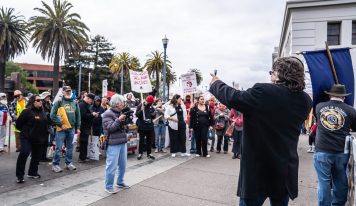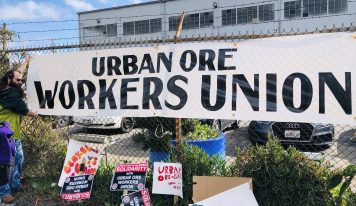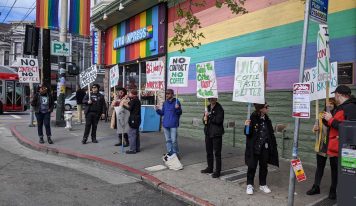San Francisco — After a heated battle between the city and its own school district, the city will begin a phased opening of public schools starting April 12. While the opening has been agreed to by both the teachers’ union and the school district, many teachers are warning of the dangers of reopening the schools without guaranteeing the proper resources and protections are in place for students.
Nationally, the CDC has updated their guidelines to suggest that as little as 3 feet can be enough distance to prevent COVID spread, after saying consistently for nearly a year that 6 feet is the minimum safe distance. This comes as part of the Biden administration’s efforts to continue the Trump-era policies of aggressive reopening.
Local governments such as the City of San Francisco have taken this guidance such as this as justification that fewer resources need to be provided to public schools which reopen. For instance, the safety protocols in the reopening agreement include self-reporting symptoms and performing visual checks, rather than the more effective temperature scanners. As the COVID-19 vaccines have not been tested on people younger than 16, most students are not eligible for the vaccine, making them vulnerable to unprotected spread in close quarters.
The teachers who will be at the frontlines cite this lack of resources as major risk factors in reopening. Without proper vaccination for teachers, or proper personal protective equipment for employees and students, another spike is inevitable, they say. The City Attorney Dennis Herrrera, on the other hand, argued that schools must aggressively reopen without vaccination for the staff, even though both the school district and the teachers’ union were in agreement that opening during the red tier should be predicated on teacher vaccination to prevent infection to students. Supervisor Dean Preston backed the school district on Twitter, saying, “Count me as one public school parent and elected official who wants to support our educators and school staff, not sue them.”
Proponents of reopening argue that remote learning presents severe and varied difficulties for students. Teachers reported that some of their students have had to live in cramped houses, with all family members home at the same time, and have had to work with poor internet or without solitary space. Some teachers have reported students who live in small apartments with 5 siblings in the same room; they enter the Zoom chat and immediately mute themselves because their siblings are also on school calls. Supervisor Ronen noted that “many students [are] homeless, living in SROs, & Public Housing”.
However, the learning disruptions the students have learned to live with for the last year are not the same as having to deal with widespread disease and death in one’s close family. One teacher relayed a story that one of his students was apologizing profusely for missing class because his uncle died of COVID, and that level of tragedy visiting a whole generation of students can have devastating consequences.
Proponents of school reopening emphasize preliminary data from private school reopenings that suggests doing so can pose a reasonable risk. However, private schools often have more resources than public schools, and the families that can afford private education are usually better equipped to handle COVID due to better health insurance and salaried jobs that can be performed from home. In public schools, the student body is more diverse, with more people of color and poor students. Studies clearly show that people of color and people living in poverty have a much higher death rate from COVID in San Francisco.
What lies beneath much of the school reopening debate in San Francisco is a broader political program. Tech investor Pete Skomoroch said of the reopening, “someone with operational experience needs to take over the function of the SF School Board ASAP, they are running [SFUSD] into the ground”. Another activist, Elizabeth Kelly, said “This BOE is doing a BAD job of retaining and attracting white and AAPI families”. Furthermore, the wider effort to recall school board members continues even though the board has decided on a safe reopening plan. For these activists, the relative ease at which private schools reopened during a pandemic should be viewed as a positive feature to be emulated, and that parents move their children to private school is evidence that the public system is not fulfilling its mission.
But in San Francisco, the mission that teachers are given is a broad and taxing one. Teachers often perform the work of frontline social care workers; they provide food, technology, and counseling to their students, which is mostly unpaid work and for which they are undertrained. They must provide safety and learning for many of the city’s most vulnerable children. For many of San Francisco’s teachers, their job is a calling which they are answering, because without their work young people would be significantly more vulnerable.
A teacher from Mission High School, Greg McGarry said, “If I believed opening schools was safe I would be advocating to open them. But opening schools now with the lack of resources we have will lead to unnecessary illness or even death for the most vulnerable people in this city.”





